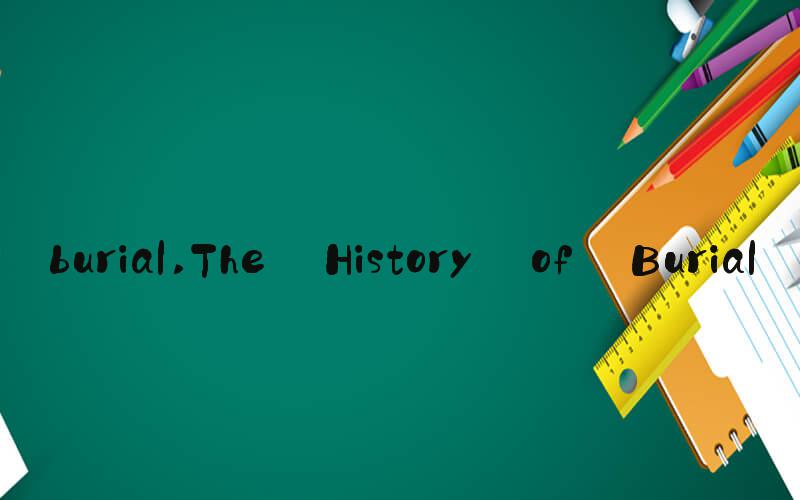 Burial: The Art of Laying to Rest
Burial: The Art of Laying to RestBurial is the act of laying someone to rest after they have passed away. It is a ritual that dates back to ancient civilizations and has been practiced in various forms across cultures and religions. It is a significant moment that marks the end of a person’s physical journey on earth and the beginning of their spiritual one. In this article, we will explore the art of burial and how it has evolved over time.
The History of BurialBurial has been practiced for thousands of years, with the earliest recorded burials dating back to the Paleolithic era. These burials were simple and involved placing the deceased in a shallow grave with little to no ceremony. As civilizations developed, so did their burial practices. The ancient Egyptians, for example, mummified their dead and entombed them in grand tombs with elaborate grave goods. In medieval Europe, burial rites included placing the deceased in a shroud and burying them in a churchyard. In some cultures, such as the Vikings, cremation was the preferred method of disposal.
The Modern Burial ProcessIn modern times, burial practices have become more standardized. When someone passes away, their body is typically embalmed and placed in a coffin. The coffin is then transported to a cemetery and buried in a grave. The grave may be marked with a headstone or marker, which serves as a memorial for the deceased. Burial services often include a religious or secular ceremony to honor the life of the person who has passed away and offer comfort to their loved ones.
The Environmental Impact of BurialWhile burial is a necessary part of the grieving process, it can also have a significant impact on the environment. Traditional burial practices involve embalming fluid, which can seep into the ground and pollute groundwater. Coffins are often made from wood that has been treated with pesticides or other chemicals. Additionally, cemetery lands take up valuable space that could be used for other purposes.
Alternative Burial MethodsAs concerns over the environmental impact of traditional burial have grown, alternative burial methods have emerged. One such method is natural burial, which involves burying the body in a biodegradable container, such as a wicker basket or shroud. The grave is left unmarked or marked with a native plant or tree. This method has gained popularity in recent years and is seen as a more eco-friendly option.
Another alternative method is cremation, which involves burning the body and placing the ashes in an urn or scattering them in a designated area. While cremation can reduce the environmental impact of traditional burial, it does produce greenhouse gases and can result in mercury emissions from dental fillings.
The Importance of BurialDespite the environmental impact of burial and the emergence of alternative methods, burial remains an important part of the grieving process. It allows for closure and provides a place for loved ones to visit and remember the deceased. Burial ceremonies can also offer comfort and support during a difficult time.
Overall, burial is a complex and multifaceted practice that has evolved over time. As we continue to grapple with issues related to the environment and sustainability, it will be interesting to see how burial practices evolve further in the years to come.
